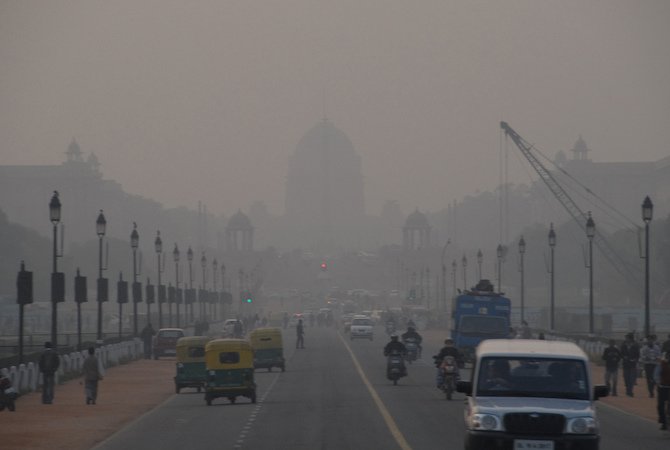There’s no denying the appeal of living in a city. The buildings stretch endlessly above, while the streets below hide millions of stories and lives. They truly are incredible places to live.
But cities, by their nature, involve a lot of things crammed into a small space. So what’s that concentration doing to your health?
For the first time in history, there are more people living in urban areas than in rural areas. In 1950, roughly 30 percent of the world’s population lived in cities. By 2014 that number had grown to 54 percent. Estimates suggest that by 2050, over 70 percent of the world’s population will live in a city. And as this number swells, so do the ramifications.
As it turns out, there are numerous health impacts, both positive and negative, of living in a city.
Positive
There’s a lot of stigma surrounding urban living, and chief among them is safety. A big worry of those thinking about moving to a metropolitan area is crime, and whether or not they’ll be able to walk home at 3am without fear.
However, some of those worries may be unfounded, at least in the US. According to an article in Time Magazine, living in a city is significantly safer than living in the countryside. The risk of what’s called injury death, which includes traffic accidents and crime, is 20 percent higher in the country than it is in the city.
And although, yes, the risk of homicide is undeniably higher in cities, those rates are going down. In 2012, New York City had 414 murders, a record low. And if that sounds like a lot, keep in mind that this is for a city of over 8 million residents.
For some perspective, that rate is pretty low when compared to somewhere like Joao Pessoa in Brazil. This city of 723,515 had 518 homicides in 2012, ranking 10th in the world.
Do you think taking a taxi is a dangerous trip? Think again. You’re much less likely to perish in a traffic accident in a city than in a rural area, by more than half.
Safety takes many forms. Studies have shown that there’s a relationship between a rise in population and lowered rates of suicide. While rates of traffic accidents proportionally increased as population increased, suicide rates didn’t increase as quickly-- Meaning the higher the population a city is, the less likely people are to commit suicide. Which kind of goes against the stereotype of the lonely city dweller.
But wait, there’s more!
Obesity rates are significantly higher in rural areas than they are in cities. According to the Rural Assistance Center, “self reported obesity and overweight [level] increases by rurality, with the most remote areas having the highest levels.” Though the reasoning for this is still murky, it may be accredited to the amount of walking done in a metropolitan area when compared to rural walking rates.
Speaking of which, all that walking also contributes to a smaller carbon footprint for city dwellers than country dwellers. According to an article by the International Institute for Environment and Development, there is a “tenfold difference in GHG emissions per person between a dense inner city neighbourhood with good access to public transport and a low density suburb distant from shops.”
Which, when you think about it, makes sense. I currently live in the metropolitan area of New York City, in a suburb just north of the Bronx, and I drive way more when I’m in my town than when I’m in the City. In fact, I’ve never driven on the island of Manhattan because there’s really no need. It’s easier, faster and more environmentally friendly to walk and take public transportation than it is to drive.
But living in a city isn’t all smiles and sunshine. There’s a whole host of factors that make you just want to curl up in a farmhouse in Iowa, a hundred miles away from the nearest telephone.
For instance, living in a city might be making you crazy.
Negative
According to an article in the Guardian, the brains of people living in rural areas differ drastically when compared to those living in urban environments. The article, which draws on the research of Dr Andreas Meyer-Lindenberg of the Central Institute of Mental health in Mannheim, Germany, argues that the brains of urbanites handle stress much worse than their country counterparts. This is probably because city dwellers face encounter environmental stressors more often.
It was found that the two regions most associated with stress, the amygdalae and the perigenual anterior cingulate cortex (pACC), were significantly more active in city dwellers when presented with a stressful situation. This means that when they get stressed, urbanites get really stressed. The sections of their brain that regulate the fight-or-flight mentality become overactive when presented with minimal levels of stress. This reaction was much less severe in their country dwelling equivalents. Again, this is probably because the ability to cope with stress becomes weakened in the face of continual stress.
And that’s not all. Previous research cited by the Guardian has also shown that city denizens “have a 21 percent increased risk of anxiety disorders, and a 39 percent increased risk of mood disorders.” And in case that wasn’t enough, people born and raised in cities are also twice as likely to develop schizophrenia.
A big contributor to these increased anxiety disorders is perpetual overcrowding. According to an article in LSE Cities, “living in crowded areas is associated with increased social stress, since the environment becomes less controllable for the individual.”
The sheer reality of constantly being surrounded by people is interpreted by the brain as a lack of control, be it consciously or subconsciously, which increases anxiety. This starts a domino effect, as increased anxiety and stress lead to a lack of sleep and chronic fatigue, which inspires a compromised immune system, and jeopardized health.
Speaking of chronic fatigue, cities may also negatively affect circadian rhythms. According to the Huffington Post, city life causes faster circadian rhythms in blackbirds, causing them to be active for 40 minutes longer than their rural counterparts. This circadian disruption is most likely present in humans too: it’s no coincidence that New York is called the city that never sleeps (so much light and noise!).
Furthermore, PBS suggests that a disrupted circadian rhythm can actually increase the risk of developing breast cancer. In the article, epidemiologist Richard Stevens of the University of Connecticut argues that women working night shifts are almost twice as likely to develop breast cancer.
And it isn’t just the lack of sleep. Small apartments have also been found to have negative effects on health.
As New York City struggles to provide enough housing for its growing population, more and more often smaller apartments are suggested as a solution-- but the potential health risks may overshadow the benefits. These ‘micro-units’ range between 250-370 square feet, whereas the average New York City apartment is 750 square feet.
According to an article in The Atlantic, “a resident with a demanding job may feel trapped in a claustrophobic apartment at night--forced to choose between the physical crowding of furniture and belongings in his unit, and social crowding.” It’s important to remember that this claustrophobia is most readily felt in these micro-units. A small apartment could compound the issue of overcrowding that an urbanite may feel already.

That being said, there absolutely is merit to living in a smaller space. People with tens of thousands of square feet for themselves and their cat don’t need that much room, and are negatively impacting to the environment.
City living may have its ups and downs health wise, but you can’t argue that metropolitan air pollution is the most dangerous health factor… right?
Well, honestly-- it’s complicated.
It’s complicated because recent studies have found that race and income are much more impactful on a child’s likelihood of getting asthma than where they grew up. According to an article in Time, “the greatest predictors of asthma risk... are poverty and being African American or Puerto Rican.” This may be due to extraneous factors such as lack of resources and indoor pollution.
But pollution risk isn’t just about asthma.
According to the WHO, pollution in both rural and metropolitan areas caused 3.7 million premature deaths in 2012, primarily due to heart disease and strokes. Of that number, more than two thirds were in India or China.

These numbers are shocking, but they reflect a pattern in pollution. In countries where there are fewer regulations on pollutants, there are significantly more deaths. Places like the United States and Europe tend to produce more agricultural pollution than any other kind. Less developed areas such as India and China produce much more pollution from residential sources.
According to an article in Time “In India and China… emissions from residential heating and cooking drive air pollution by creating unhealthy quantities of smoke. Overall, residential heating emissions cause one third of air pollution-related deaths worldwide.”
This speaks on the differences between developed and developing countries. In places where there are strict regulations on pollution and air quality, the negative impacts of living in a city are mitigated. For example, according to a report from NYC Health, there’s just a 0.8 percent increase of hospitalizations due to acute, daily exposure to pollution in the warm season in New York City.
On the contrary, in Delhi, India, just under half of the city’s 4.4 million children have irreversible lung damage due to pollution. The study tracked 11,000 children for three years, and came to the shocking conclusion that “children in Delhi, between four and 17 years of age, were worse off than their counterparts elsewhere-- the figures were twice to four times as bad.”
In cities such as Paris, London, Madrid or New York, we tend to disregard the health impacts of living in such a place because they’re relatively negligible. Poverty and race are much bigger contributing factors of asthma than the pollution. But there are places like Delhi where millions of people are at risk of debilitating health problems due to the air they’re breathing.
Now’s the time to start talking about this, to urge all world leaders, not just those in the developed world, to implement stricter pollution regulations, for the good of the world and its people.
Whether you’d rather focus on the positives of city life or the negatives, there’s no arguing that living in a sprawling metropolis affects you. And now more than ever, we’re going to have to delve into those impacts as city population grows.